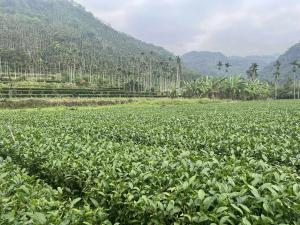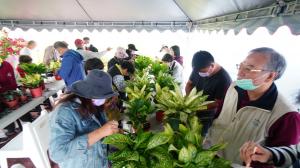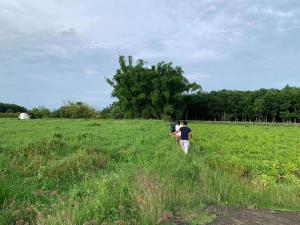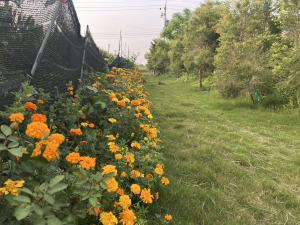Satoyama Mace Initiative Wins 2025 MUSE Creative Awards for Corporate Social Responsibility

"Asian traditional rural landscapes leverage the Satoyama Initiative to generate carbon credits and foster sustainable economies through global environmental action." This image illustrates how community-based stewardship in traditional rural landscapes c

Fostering balance between humans and nature through AI-assisted Satoyama Initiative climate solutions.
A landmark recognition for a global movement uniting climate justice, community empowerment, and the harmony of people and nature
TAIWAN, October 23, 2025 /EINPresswire.com/ -- The Satoyama Mace Initiative, a groundbreaking environmental and social innovation program inspired by the Japanese philosophy of satoyama—the harmonious coexistence between human society and the natural world—has been honored with the Silver Award in Corporate Social Responsibility at the 2025 MUSE Creative Awards.
This international recognition celebrates the Initiative’s unique achievement in redefining climate action as a story of healing, dignity, and hope for communities most affected by environmental and economic inequality.
Redefining Climate Justice through Satoyama Wisdom
At the heart of the Satoyama Mace Initiative lies a profound question: How can humanity restore balance with the Earth while ensuring justice for those who have contributed least to climate change but suffer the most from its consequences?
In answering this question, the Initiative transforms the ancient satoyama wisdom into a modern blueprint for sustainable development, one that bridges environmental restoration with social renewal.
Launched along Taiwan’s historic Jishui River Basin, the Initiative began as a demonstration project revitalizing over 3,900 hectares of degraded farmland—an area once scarred by flooding, displacement, and ecological decline. Working with Indigenous peoples, local farmers, and academic partners, the project introduced innovative carbon reduction methodologies recently endorsed by the United Nations University Institute for the Advanced Study of Sustainability (UNU-IAS)/IPSI.
The results were transformative:
Over 700,000 tons of verified annual carbon reductions, valued at USD $28 million, have been generated through sustainable agricultural practices, wetland restoration, and biodiversity conservation. But what truly distinguishes the Satoyama Mace Initiative is not just its measurable climate performance—it is the moral architecture behind it.
From Commodity to Community: Carbon as a Currency of Justice
In most carbon offset systems, revenues flow toward intermediaries or distant investors, leaving the people who maintain ecosystems with little to no benefit. The Satoyama Mace Initiative reverses this pattern by channeling carbon revenues directly to Indigenous and smallholder farming communities—those who live closest to the land and bear the greatest stewardship responsibilities.
By doing so, the Initiative transforms carbon from an abstract commodity into a currency of justice, dignity, and survival. Each carbon credit represents not just a reduction in greenhouse gases, but also a restored livelihood, a protected forest, or a revitalized riverbank. The Initiative’s economic model ensures that environmental sustainability and social equity are inseparable.
As Dr. Shu-Mei Wang, co-founder of the SEPLS Carbon Credit Regional Revitalization Center, explains:
“For too long, climate finance has overlooked the people who are nature’s first guardians. Satoyama Mace was designed to return both recognition and revenue to those communities. It’s about ensuring that when the Earth heals, its people rise—and when people rise, the Earth itself begins to breathe again.”
Strategic Communication as a Catalyst for Global Change
Beyond its measurable outcomes, the Satoyama Mace Initiative was conceived as both a CSR program and a global communication campaign—a deliberate fusion of technical sustainability with storytelling and creative advocacy. The team understood that to change systems, one must first change perceptions.
Through collaborations with international media, design agencies, and educational institutions, the Initiative crafted an inspiring narrative that reframes rural and Indigenous communities not as silent victims of climate collapse, but as leaders of a just transition.
Its storytelling strategy combines digital media campaigns, short films, and community exhibitions that showcase how environmental stewardship is also cultural preservation, and how traditional ecological knowledge can illuminate new paths toward resilience.
This holistic communication effort not only captured the attention of policymakers and development organizations across Asia, Africa, and Latin America but also resonated emotionally with audiences worldwide—transforming a technical sustainability project into a global movement of empathy and action.
A Convergence of Faith, Science, and Solidarity
What makes the Satoyama Mace Initiative especially unique is its ethical foundation. Echoing Pope Francis’s Laudato Si’ (No. 49), which reminds humanity that “a true ecological approach always becomes a social approach; it must integrate questions of justice in debates on the environment,” the Initiative embodies the spirit of integral ecology—where environmental care and human dignity are one and the same.
In this sense, the Satoyama Mace Initiative is not merely a climate project; it is a moral and cultural renaissance. It invites people from all walks of life—scientists, farmers, artists, policymakers, and faith communities—to co-create a future where sustainability is not just technical compliance but a shared expression of compassion, gratitude, and hope.
This inclusive spirit is reflected in the Initiative’s partnerships with universities, cooperatives, and social enterprises. Each collaboration reinforces the central idea that the path to net zero must also be the path to human wholeness—a message increasingly vital in an era of ecological despair and social fragmentation.
From Taiwan to the World: Scaling a Just Transition
The recognition from the MUSE Creative Awards marks not an endpoint, but a beginning. With the momentum of this honor, the Satoyama Mace Initiative is now expanding its framework across Asia, Africa, and Latin America, empowering communities to develop localized carbon credit systems anchored in ecological restoration and cultural continuity.
By combining science-based methodologies (aligned with the CDM (the Clean Development Mechanism)) with the Kunming-Montreal Global Biodiversity Framework (GBF) and community-based governance, the Initiative ensures that global carbon markets evolve not as extractive systems, but as vehicles of restoration and reciprocity.
Global Recognition, Local Transformation
Winning the 2025 MUSE Creative Award in Corporate Social Responsibility affirms the Initiative’s success in uniting design, communication, and impact. The MUSE Awards, one of the world’s most prestigious creative industry honors, recognize excellence in innovation, storytelling, and purpose-driven design.
For the Satoyama Mace Initiative, this accolade represents more than creative achievement—it signifies a new chapter of visibility for community-led climate solutions.
Dr. Wei-Sheng Chen in Department of Resource Engineering, National Cheng Kung University, noted:
“Satoyama Mace transforms climate justice from a policy debate into a human story. It bridges academic research, artistic expression, and local action in a way that reminds us what creativity truly means—finding beauty in restoration and meaning in resilience.”
Building a Future Where Nature and Humanity Coexist
Looking forward, the Satoyama Mace Initiative aims to establish the SEPLS Carbon Credit Regional Revitalization Center as a global hub for training, research, and collaboration. This Center will provide open-access learning resources on sustainable agriculture, carbon methodologies, and community governance—empowering local actors to design their own solutions rather than importing models from abroad.
In essence, Satoyama Mace envisions becoming a testament to human compassion and ecological harmony. The award serves as both validation and invitation—to continue cultivating a movement that transcends sectors, nations, and generations.
A Message of Hope
At a time when global crises—from climate change to biodiversity loss—have left many feeling powerless, the Satoyama Mace Initiative offers a message of empowerment rooted in community wisdom. It reminds the world that sustainability is not a privilege of the powerful, but a birthright of every person and every ecosystem.
As the Initiative’s motto declares:
“When the land heals, its people rise—and when people rise, the Earth itself can breathe again.”
This simple yet profound truth continues to guide every action of the Satoyama Mace team as they transform faith, science, and creativity into tools of renewal. The MUSE Creative Award now shines as a beacon of encouragement—for communities across the world to believe that their stories, too, can become instruments of healing.
About the MUSE Creative Awards
The MUSE Creative Awards is an international competition celebrating excellence in design, marketing, communication, and innovation. Organized by the International Awards Associate (IAA), the program honors creative professionals and organizations who inspire humanity through vision and originality. Each year, the awards attract thousands of entries from more than 100 countries, recognizing outstanding achievements that advance both the art and purpose of creative work.
About the Satoyama Mace Initiative
The Satoyama Mace Initiative endorsed by UNU-IAS/IPSI is a global sustainability and social innovation movement dedicated to integrating satoyama principles into modern climate action. Its mission is to unite carbon markets, cultural heritage, and local governance in pursuit of ecological balance and social justice.
Shu-Mei Wang
SEPLS Carbon Credit Regional Revitalization Center
email us here
Visit us on social media:
LinkedIn
Other
Legal Disclaimer:
EIN Presswire provides this news content "as is" without warranty of any kind. We do not accept any responsibility or liability for the accuracy, content, images, videos, licenses, completeness, legality, or reliability of the information contained in this article. If you have any complaints or copyright issues related to this article, kindly contact the author above.



